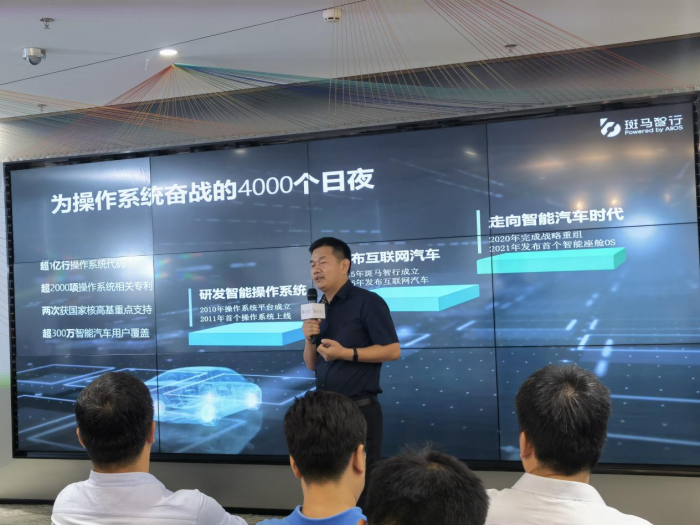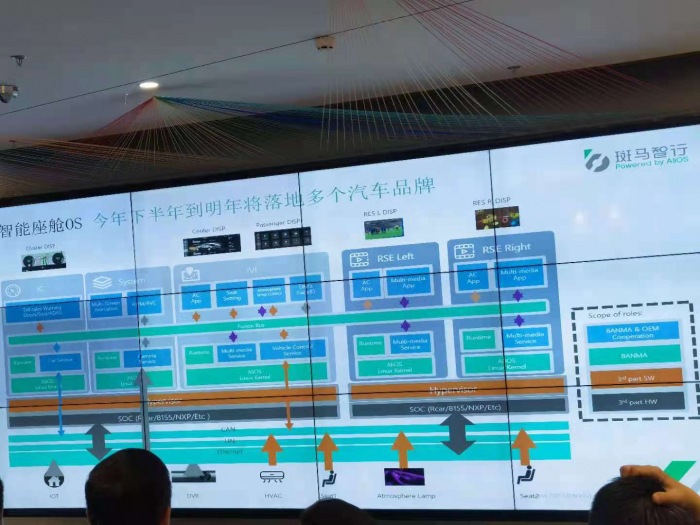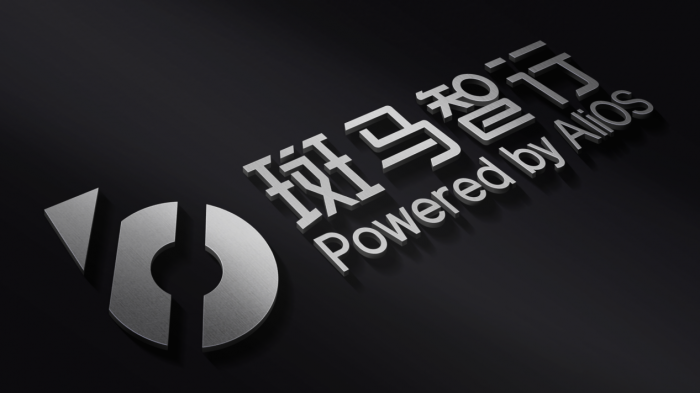Author: Mr.Yu
On July 14, 2021 Beijing Time, Pony.ai held a shareholder addition signing ceremony in Shanghai. Alibaba Group, SAIC Group, Guotou Zhaoshang, Yunfeng Fund and other four shareholders jointly added 3 billion yuan. The specific valuation and investment ratio have not been disclosed.
At the same time, Pony.ai will open a new round of strategic financing window to industrial capital.

Not surprisingly, all four are old shareholders. The last time Pony.ai received 1.6 billion yuan in the first round of financing was still in September 2018.
Three years have passed. Driven by the vision of former Pony.ai CEO Haofei to “defeat Android in the car system,” I don’t know if Pony.ai has come closer to their goal.
Fortunately, for Pony.ai, which has returned to the open market, whether it is surnamed SAIC or Alibaba or something else is no longer important.
Operating system: success or failure
Many people have wanted to replicate the success of Microsoft Windows operating system.
Like many failed projects that were once brilliant on the crowdfunding platform Kickstarter, in many cases, ideas and technologies may be feasible; but with the addition of business and users, the difficulty suddenly increases.
In the final analysis, humans are the ones with the most variables.
At yesterday’s addition ceremony, Pony.ai’s co-CEO Zhang Chunhui mentioned the “three intelligences” in his speech:
-
First, interaction intelligence-human-computer interaction is an eternal theme. Today, the target of passenger car services is still users, and it will not change until the era of unmanned driving is fully realized and vehicles completely become robots. In this context, what is needed is interaction that understands people more.
-
Second, service intelligence-today’s cars are no longer simply transportation tools; they represent their respective lifestyles. After vehicles become more and more intelligent, the less users need to worry about driving. This provides a foundation for various high-quality scene services to appear in the car.
-
Third, driving intelligence-Zhang Chunhui gave an analogy: as long as the car’s steering wheel is still there, no matter how intelligent it is, this human-machine co-driving mode will not change in the short term. Only when the steering wheel is completely eliminated from the car, intelligent driving will become a basic function of the vehicle.
Zhang Chunhui also admitted that this will be a long process.
 In the era when Roewe RX5 was launched, SAIC and Banma tried to define vehicle intelligence through their first intelligent connected vehicle. Today, Banma Zhixing still remains a software enterprise that provides empowerment for partners with underlying operating systems to achieve differentiated competitiveness.
In the era when Roewe RX5 was launched, SAIC and Banma tried to define vehicle intelligence through their first intelligent connected vehicle. Today, Banma Zhixing still remains a software enterprise that provides empowerment for partners with underlying operating systems to achieve differentiated competitiveness.
The uniqueness of this operating system business lies in the fact that the “two giants” model is the basic format for achieving huge success in commercial field – Microsoft’s Windows and Apple’s Mac in the era of personal computers, and Google’s Android and Apple’s iOS in the era of mobile.
Although AliOS has undergone more than a decade of polishing, Chairman Chen Hong does not want SAIC to become the Nokia of the automotive world and repeat the drama of the mobile era “success or failure lies with Symbian” in the face of strong competitors such as Huawei and Baidu.
Once upon a time, SAIC’s strict control over the supply chain system was obvious to all. Obviously, the decision makers seem to have finally realized that it is better to let Banma return to the market to face competition, stimulate creativity, rather than let it approach a department in SAIC’s system that once developed an operating system.
Seeing this, for Mr. Yu who has worked in a certain state-owned enterprise office for several years, the importance of maintaining vitality through market competition can hardly be expressed in a few words.
Anyway, let’s get back to the point. The operating system and the application ecology and developers derived from it have formed a mode of ecological cycle similar to that of nature:
The more abundant the application ecology, the more it will affect users’ consumption decisions;
The larger the user base, the more returns developers get, and the higher their enthusiasm, the more the application ecology will get “nourished” and become more and more abundant.
The development of the operating system is one thing, and continuous operation is another. Banma is also aware of this.
If the global billions of developers participate in the iOS and Android ecological cycle, then Banma Zhixing’s ecology is the host manufacturers in the automotive industry.
AliOS gradually develops tooling
Banma Zhixing is trying to evolve and promote the iteration of vehicle intelligence by providing heterogeneous operating systems. When it sinks to basic software, Banma’s partners, which are host manufacturers, innovate and develop personalized customization around it, and then operate to create differentiated competitiveness that fits their own brand style.# Zhang Chunhui said that today, Banma Intelligent Drive can provide excellent user operation experience, including data operation experience, to help partner companies create a whole digital full-link process. This is equivalent to Banma Intelligent Drive taking on the responsibility of not only helping partner companies create smart cars, but also undertaking a series of operational work.
Zhang Chunhui summarized the new model as “one vertical and one horizontal”:
-
Vertical means to help OEMs and other partners participate in the intelligent car market in a direct competitive manner through empowerment.
-
Horizontal means that Banma will participate in the entire digital closed-loop process from product definition to sales and user operation in the automotive industry.
Satya Nadella, the current CEO of Microsoft, mentioned in an important speech at the end of last year and the beginning of this year that the spread of the COVID-19 pandemic has prompted the world to complete the digital process that could have taken two years in just two months.
In the automobile industry, the trend toward intelligence will make every car manufacturer a technology company driven by digitalization.
In this regard, whether SAIC, which rejects third-party autonomous driving technology, is “soulless,” and whether Chen Hong’s performance is arrogance and hostility of a leading enterprise, in our opinion, it is more like an alertness and anxiety that instinctively occurs after the sensor power is fully utilized, and facing unknown competition.
Today, we no longer talk about the car networking alone, nor do we talk about the relationship between the car machine intelligence and the whole vehicle intelligence. But the core significance of car networking is constantly online, which means that the car, service, and people are connected online for the in-vehicle terminal. To some extent, these are important components of digitalization. After the whole-vehicle intelligence, the realization of the integration of intelligent transportation and the future smart city cannot be achieved without them.
Meanwhile, each operating system must also face a series of important issues:
-
How to fully mobilize resources scattered on the end, intelligent edge, and intelligent cloud through integration capability?
-
How to integrate heterogeneous computing power and resources in systems that work together with various CPU, GPU, and NPU simultaneously?
-
How can various applications in the in-vehicle ecosystem be integrated with ADAS related life-supporting services and autonomous driving capabilities, making it easier for OEMs to deploy services?
Shao Feng, CTO and Chief Architect of Banma Intelligent Drive, said that Banma Intelligent Drive has found its own development rhythm in the trend of developing from the in-vehicle OS to the cabin OS, and finally the whole vehicle OS.
First, Banma’s in-vehicle OS has been loaded on millions of mass-produced cars and received a lot of user praise.Next, in the stage of smart cockpit OS 3.0, which has already entered the production phase in 2021, BYD will realize all of the core capabilities of the cockpit through AliOS. Furthermore, by deeply integrating with the AUTOSAR in the vehicle domain, BYD will implement a complete real-time and virtualized computing platform in the vehicle OS.

Suddenly, I thought of a friend who works in R&D at a big company jokingly saying that the bosses responsible for consumer businesses are in charge of blowing up PPTs, while we are responsible for implementation. This seems appropriate here.
According to BYD’s plan, it will be very easy for carmakers to do customized development on BYD’s architecture. This BYD smart cockpit OS has entered the production phase and will be installed in 3-5 mass-produced cars from the second half of 2021 to 2022.

This also explains that BYD has actually found the source for its newly acquired 3 billion by developing its next-generation operating system.
“Today, we are also very honored to have invited many media, automotive analysts, and industry capital from various automotive companies and some automotive industry investors. I believe that the directions we provided earlier will give you confidence in the next round of investment in BYD.” This sentence appeared in the last stage of yesterday’s event.
The strategy of opening up to industry capital for financing largely indicates that BYD has started its journey out of SAIC.
Going back to our initial sentence, whether it’s surnamed SAIC or Alibaba, or something else, whether it’s defeating Android or becoming Android, BYD’s vision has never changed.
Hopefully, by then, there will be a sufficient number of developers and users in the business of operating systems to verify the possibility of this commercial model running benignly.
In conclusion
It has been said that the automotive industry is an industry that easily makes people greasy.
Car manufacturers are busy making and selling cars. This model has been going on for too many years. In any case, earning a lot of money is not too difficult.
As we said in yesterday’s “Stop Trying, Come and Build Cars” article, the reason why car manufacturing has become hot again is because everyone sees their own opportunities in the sudden reshuffle of the industry.No matter if it’s FAW, SAIC, Alibaba, or Germany’s venerable brands or China’s big players, they should all realize that if they keep being greasy, they will become famished roadside corpses before discussing whether or not they have a “soul.”
This article is a translation by ChatGPT of a Chinese report from 42HOW. If you have any questions about it, please email bd@42how.com.
